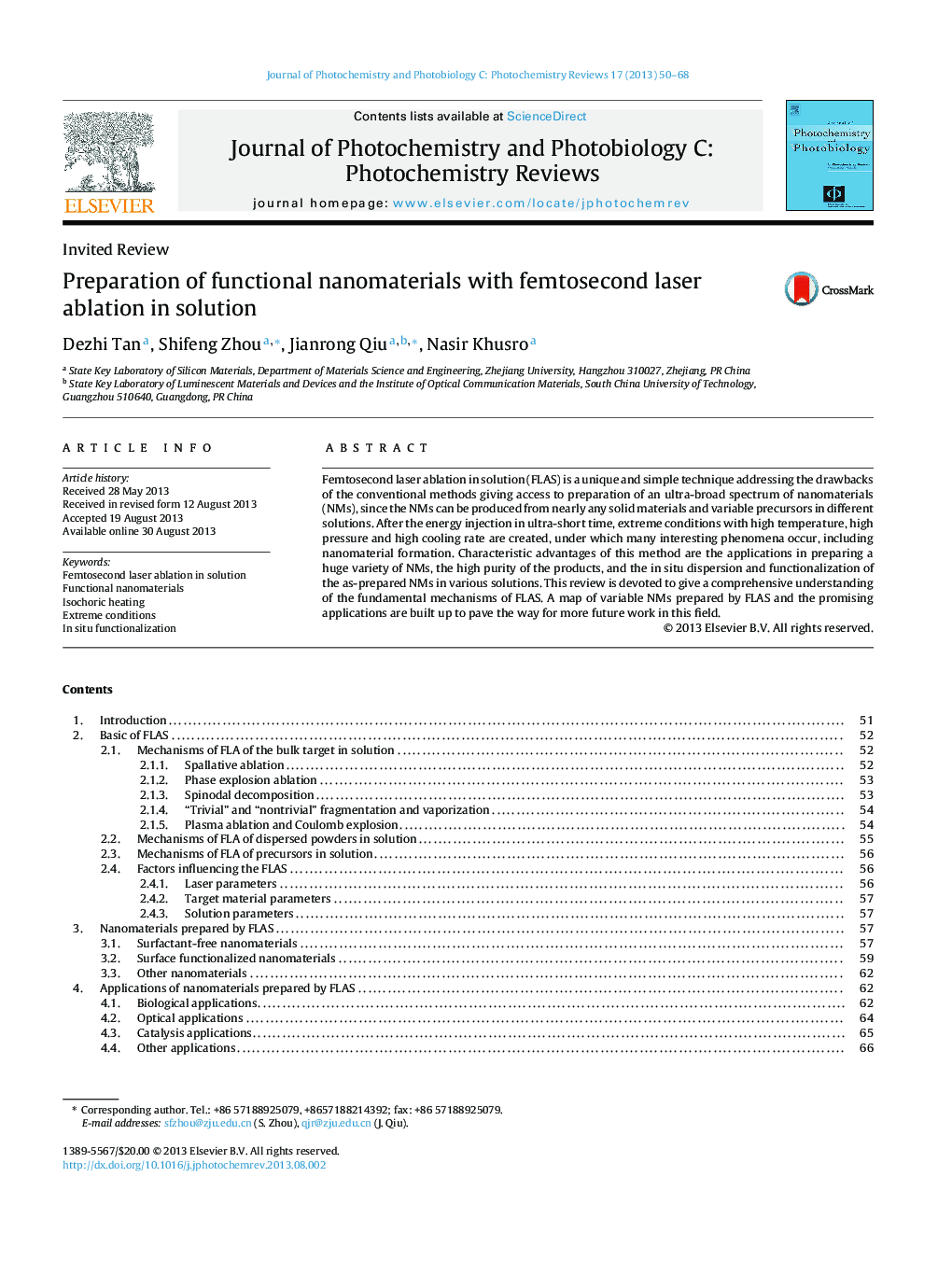| Article ID | Journal | Published Year | Pages | File Type |
|---|---|---|---|---|
| 31298 | Journal of Photochemistry and Photobiology C: Photochemistry Reviews | 2013 | 19 Pages |
•We reviewed the proposed mechanisms of nanomaterial generation by femtosecond laser ablation in solution.•The factors affecting the final structures of nanomaterials were reviewed.•The approaches to control the structures of nanomaterials, and to tune the size and size distribution were reviewed.•The nanomaterials prepared by femtosecond laser ablation in solution and their potential applications were reviewed.
Femtosecond laser ablation in solution (FLAS) is a unique and simple technique addressing the drawbacks of the conventional methods giving access to preparation of an ultra-broad spectrum of nanomaterials (NMs), since the NMs can be produced from nearly any solid materials and variable precursors in different solutions. After the energy injection in ultra-short time, extreme conditions with high temperature, high pressure and high cooling rate are created, under which many interesting phenomena occur, including nanomaterial formation. Characteristic advantages of this method are the applications in preparing a huge variety of NMs, the high purity of the products, and the in situ dispersion and functionalization of the as-prepared NMs in various solutions. This review is devoted to give a comprehensive understanding of the fundamental mechanisms of FLAS. A map of variable NMs prepared by FLAS and the promising applications are built up to pave the way for more future work in this field.
